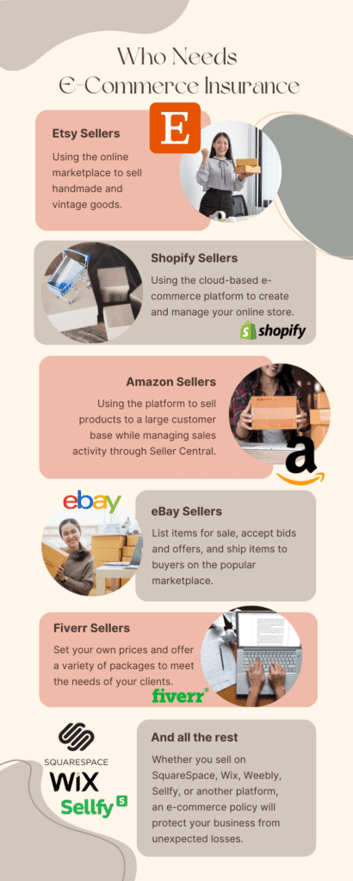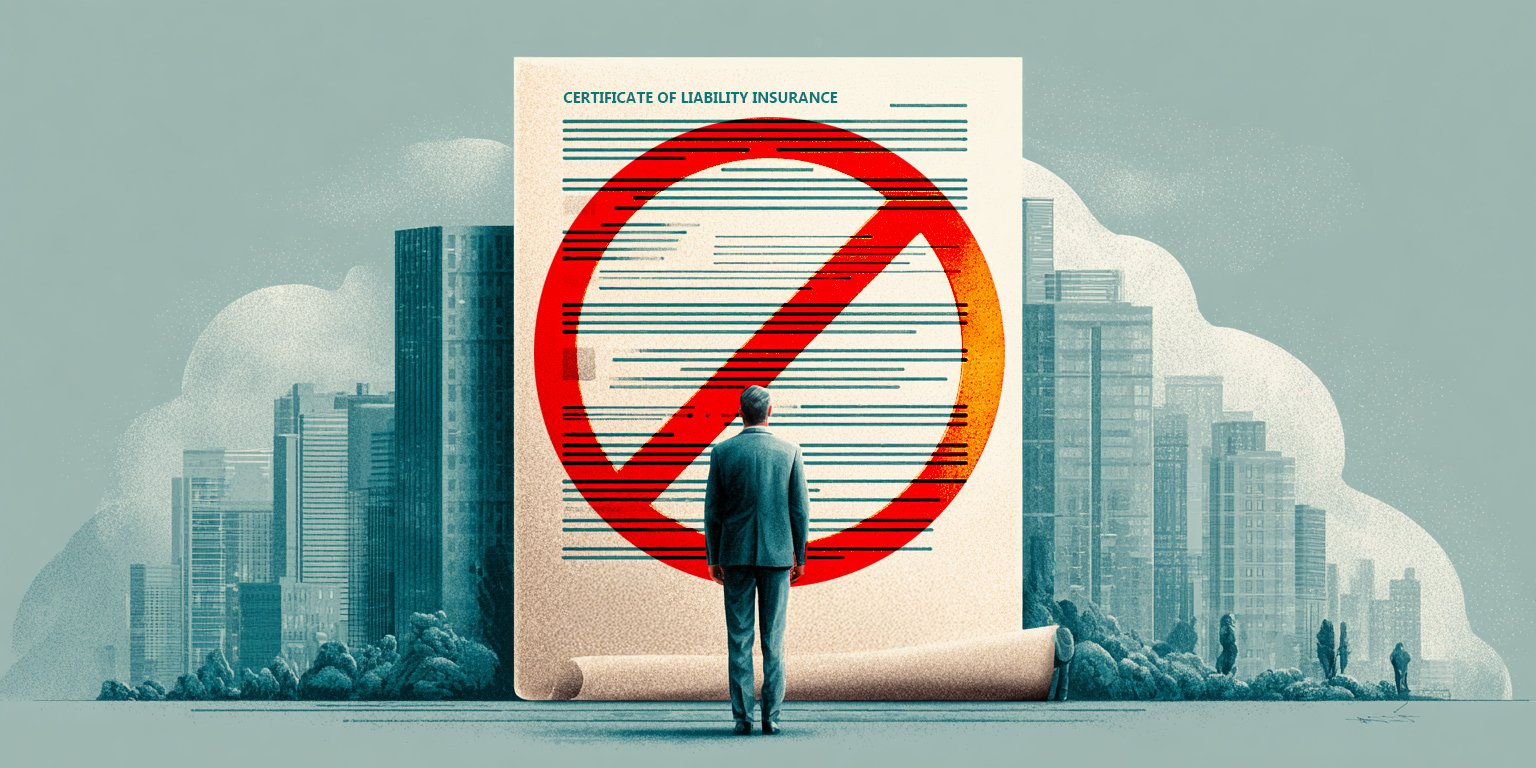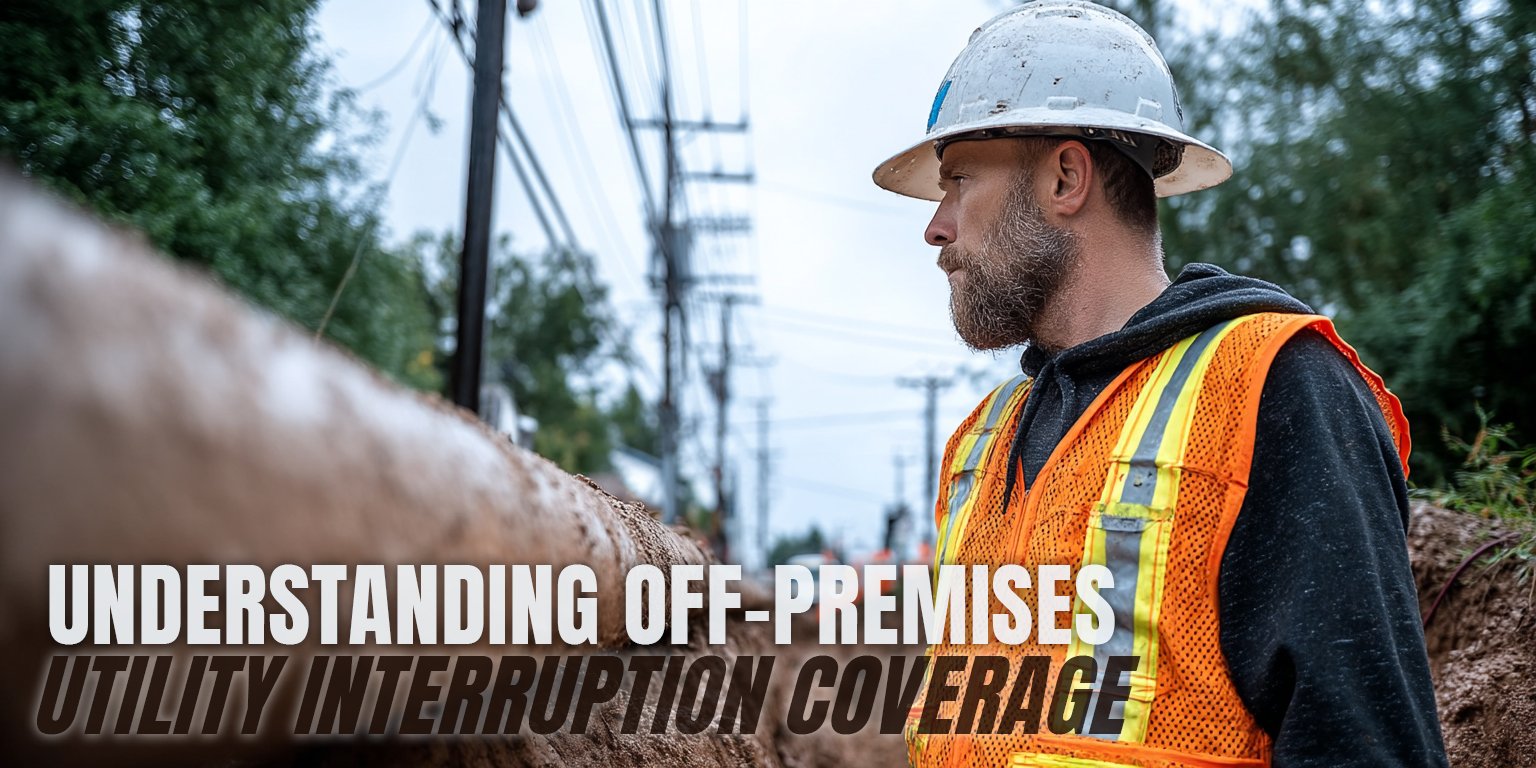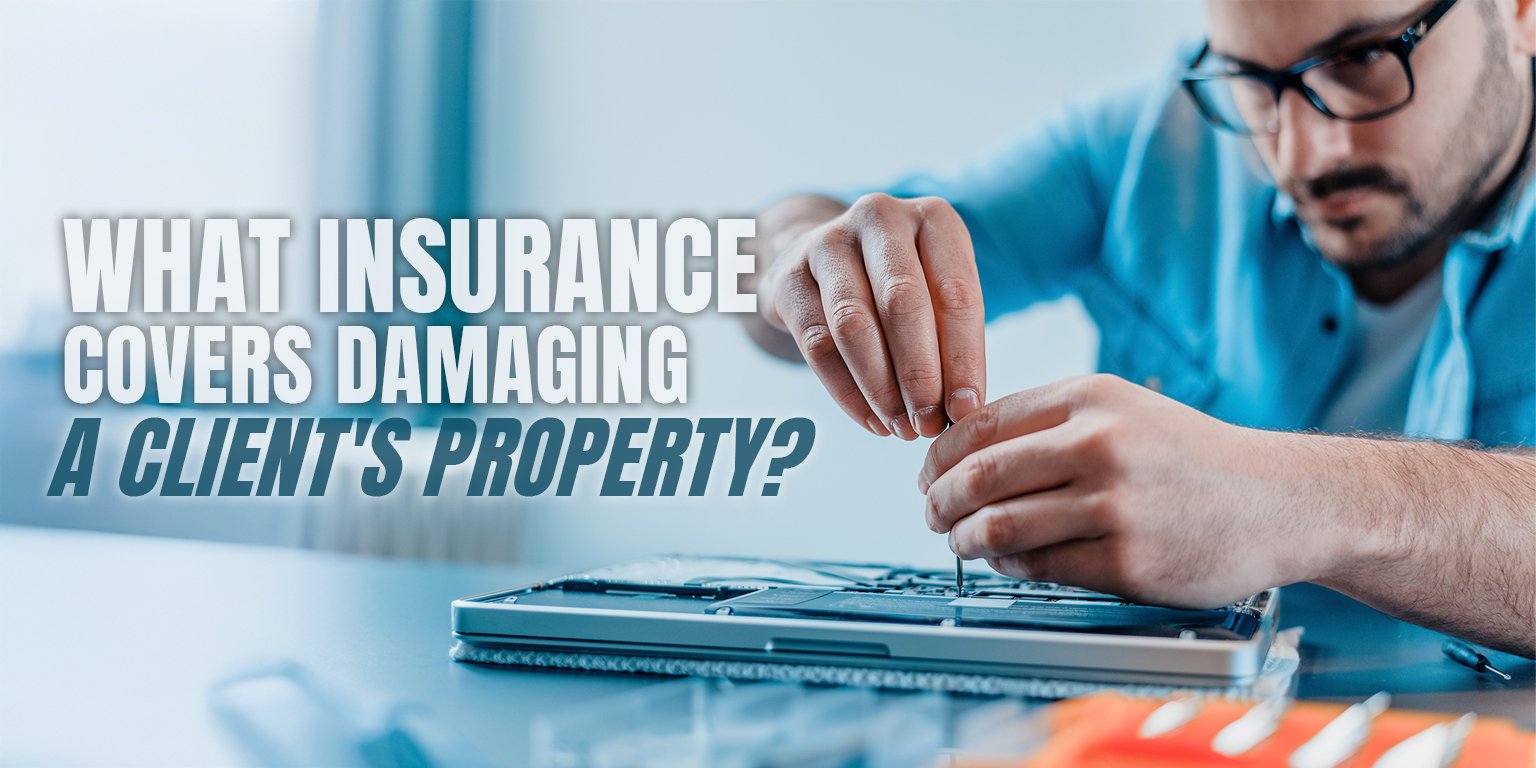How to Insure an E-Commerce Shop in Central New York: A 6-Step Guide
May 31st, 2023
11 min read

When starting an e-commerce shop, a lot of budding small business owners are unaware of the risks and liabilities these types of businesses face.
You may think that you don’t need insurance or that your existing policies are enough to cover your online operations. However, this could expose you to costly lawsuits, damages, or losses that could jeopardize your business.
Finding the best coverage for your e-commerce shop in Central New York can be challenging and time-consuming, especially if you’re not familiar with the different options and requirements available. We understand your situation. That’s why we chose this topic.
For several years, our agency has been providing customized and affordable insurance solutions for businesses of all sizes and industries in CNY. We understand the unique challenges and opportunities that e-commerce businesses face in today’s digital world.
By researching this topic, you’ve shown that you’re a smart and forward-thinking e-commerce business owner.
In this article, we’ll guide you on insuring your e-commerce shop in Central New York. And we’ll cover the different insurance policies that can safeguard your online business from risks and liabilities.
After reading to the end, you’ll have a thorough understanding of how to obtain optimal coverage for your e-commerce shop in our region.
Jump to Section
Six Steps to Properly Insuring Your E-Commerce Business Step 1: Evaluate Your E-Commerce Business Risks
Step 1: Evaluate Your E-Commerce Business Risks
Step 2: Decide Which Types of Policies You Need
Step 3: Choose How to Shop for Your E-Commerce Policy Step 4: Select a Suitable Insurance Provider
Step 4: Select a Suitable Insurance Provider
Step 5: Purchase Your Policy
Step 6: Keep Your E-Commerce Policies Up to Date
Protect Your E-Commerce Shop with the Right Insurance Coverage
Six Steps to Properly Insuring Your E-Commerce Business
As an e-commerce business owner in CNY, you need insurance to protect yourself from various risks. They come in the form of cyberattacks that could steal or expose your customer data, damage your website, or ruin your reputation.
Then there’s the possibility of facing lawsuits or claims from customers, suppliers, regulators, or others who may accuse you of causing them injury or loss with your products or services.
Your inventory could also be lost or damaged, which will affect your income. This can be due to natural disasters—like snow collapsing your garage roof and destroying all your boxes of salable goods. Thieves and vandals are also a threat.
A proper insurance policy also helps you meet certain requirements or obligations as an e-commerce business owner, such as Amazon’s insurance policy for sellers.
For adequate e-commerce business insurance coverage, some of the common types of policies available to owners of online shops—which will be discussed below—are:
- General liability insurance
- Product liability insurance
- Cyber liability insurance
- Business interruption insurance
To help you get and maintain the best coverage for your online business, we’ve prepared six steps to walk you through the process and eliminate the steep learning curve.
Step 1: Evaluate Your E-Commerce Business Risks
To identify the potential hazards, accidents, disasters, or lawsuits that could affect your e-commerce business, you need to conduct a risk assessment.
A risk assessment is analyzing and evaluating the possible sources and consequences of harm or loss that could affect your online business. Some of the steps involved in a risk assessment are:
- Identify your risks: List all the possible events or situations that could negatively impact your online business, such as cyberattacks, data breaches, product defects, delivery failures, customer complaints, legal actions, etc.
- Assess your risks: Estimate the likelihood and severity of each risk, based on your past experience, industry data, market research, and so forth. You can use a risk assessment matrix to rank your risks according to their probability and impact.
- Prioritize your risks: Focus on the most significant and urgent risks that pose the greatest threat to your online business. You can use a risk map to visualize and compare your risks based on their importance and urgency.
- Mitigate your risks: Develop and implement strategies to prevent or reduce your risks, such as improving your security measures, updating or adding policies, enhancing your customer service, etc. You can also transfer some of your risks to an insurance provider by buying e-commerce insurance policies that cover your specific risks.
Step 2: Decide Which Types of Policies You Need
 After you have identified and prioritized your risks, you need to decide which e-commerce insurance policies will best protect your e-commerce business. E-commerce insurance policies are designed to cover the specific risks and liabilities that online businesses face.
After you have identified and prioritized your risks, you need to decide which e-commerce insurance policies will best protect your e-commerce business. E-commerce insurance policies are designed to cover the specific risks and liabilities that online businesses face.
Depending on your risk profile and business needs, you may need one or more of the following types of e-commerce insurance policies:
- General liability insurance: This policy covers you for bodily injury or property damage that you may cause to third parties, such as customers or visitors, as a result of your business operations.
- Product liability insurance: This policy covers you for bodily injury or property damage that your products may cause to third parties, such as customers or users, as a result of defects or malfunctions.
- Cyber liability insurance: This policy covers you for losses or damages that you may suffer or cause to third parties, such as customers or suppliers, as a result of cyberattacks, data breaches, or network failures.
- Business interruption insurance: This policy covers you for lost income or extra expenses that you may incur due to a disruption or suspension of your online business operations caused by a covered event, such as a natural disaster, power outage, or cyberattack.
You should compare the coverage options, exclusions, and costs of different e-commerce insurance policies and choose the ones that suit your business. You should also review your policies regularly and update them as your business grows or changes, which we’ll discuss in greater detail further on.
But to learn more about how these policies function, read “Home-Based Businesses: Is Homeowners Insurance Enough?”
Step 3: Choose How to Shop for Your E-Commerce Policy
Once you’ve decided which e-commerce insurance policies you need, you’ll have to shop for them. There are different avenues for obtaining e-commerce insurance, such as:
Using Agents and Brokers
One option is to work with an agent or broker. An agent or broker is a licensed professional who can help you find and compare e-commerce insurance policies from different carriers (though some agents and brokers only work with a specific insurer).
They can also advise you on the best coverage and price for your e-commerce business and assist you with the application and claims process. Be aware that some agents and brokers may charge a fee or commission for their service, and they may not have access to all the available policies in the market.
Buy an E-Commerce Policy Directly From the Insurance Carrier
In some cases, you can also contact insurance providers directly by phone, email, or website and request quotes and information on their e-commerce insurance policies. You can also negotiate the terms and conditions of your policies and get direct customer service from certain providers.
However, you may have to contact several providers separately and compare their policies and prices on your own, which is why many people opt to use an independent agent or broker instead.
To learn more about these options and how to choose the best one for your e-commerce business, read our article, “Insurance Agent or Broker: Which Should I Choose?”
Step 4: Select a Suitable Insurance Provider
After you’ve decided how to shop for your e-commerce insurance policies, you’ll need to select a suitable insurance provider that can offer you the best coverage and service for your online business.
There are many insurance providers in the market that offer e-commerce insurance policies, but not all of them are equal. Some may have more experience and expertise in insuring online businesses, while others may have better customer reviews and ratings.
To choose the best insurance provider for your e-commerce business, you should consider factors such as:
- Policy coverage: You should compare the scope and limits of the e-commerce insurance policies offered by different providers and see which ones match your risk profile and business needs. You should also check the exclusions and conditions of the policies and make sure you understand what is and isn’t covered.
- Cost: You should compare the premiums and deductibles of the e-commerce insurance policies on offer and see which fits your budget. You should also look for discounts or bundles that can help you save money on your insurance costs.
- Provider reviews and complaints: You should research the reputation and performance of the insurance providers you’re considering and see what other customers say about them. You can check online reviews, ratings, testimonials, and complaints on websites like Trustpilot, Better Business Bureau, or Consumer Reports. You should also check the financial strength and stability of the providers on rating agencies like A.M. Best or Standard & Poor’s.
- Customer service: You should evaluate the quality and availability of the customer service offered by the insurance providers you’re considering and see how easy it is to contact them, get quotes, apply for policies, file claims, or get support. You should also look for providers that offer online tools, resources, or platforms that can help you manage your e-commerce insurance policies more conveniently.
Doing this kind of legwork can prove to be a daunting task for some. But have no fear. We can help you find the best e-commerce insurance providers in the CNY market, as we have for other e-commerce business owners through the years.
Contact us to get things started, or keep reading to learn more and complete the six steps.
Step 5: Purchase Your Policy
After you’ve selected a suitable insurance provider, you’ll need to buy your e-commerce insurance policies. To do so, you’ll need to provide some information and documents to the insurance agent or provider, such as:
- Business details: This will include basic information about your e-commerce business, such as your business name, address, contact information, website URL, legal structure, ownership, etc.
- Sales data: You’ll need to provide information about your sales volume, revenue, profit margin, average order value, and so forth. You may also need to provide information about your sales channels, such as whether you sell on your own website or on third-party platforms like Amazon or Shopify.
- Inventory value: This information relates to the value of your inventory, such as the cost of goods sold, the replacement cost, the retail value, etc. You may also need to provide information about the type and quantity of products you sell, as well as where and how you store them.
- Risk exposure: Your agent and insurer will need to know the risks and liabilities your e-commerce business faces, such as cyberattacks, data breaches, product defects, customer complaints, legal actions, etc. You may also need to provide information about the security measures and policies you have in place to prevent or mitigate these risks.
Based on the information and documents you provide, the carrier will assess your risk profile and determine your eligibility and premium for the e-commerce insurance policies you want to buy.
To pay for your policies, you’ll need to choose a payment method and frequency that suits your budget and cash flow. Some common payment methods are credit card, debit card, bank transfer, or check. Some common payment frequencies are monthly, quarterly, semi-annually, or annually. You may get discounts or save money by paying upfront or in bulk.
The Certificate of Insurance
Once you’ve paid for your policies, you should receive a certificate of insurance (COI) from the insurer. A COI is a document that proves that you have valid e-commerce insurance coverage. It contains information such as your policy number, coverage type and limit, effective and expiration dates, etc.
You may need to provide a copy of your COI to third parties that require proof of insurance from you, such as Amazon or other platforms that you sell on. You can also use your COI to file claims or request changes to your policies.
If you don’t receive a COI after making payment, but get a request from a third party to supply one, learn how to handle a COI request.
Step 6: Keep Your E-Commerce Policies Up to Date
Buying your e-commerce insurance policies is not a one-time event. You should review and update your policies regularly to ensure they reflect your current business situation and needs.
Reviewing and updating your e-commerce insurance policies is important because:
- Your business may change: Your e-commerce business may grow, diversify, or evolve over time. You may launch new products, enter new markets, hire new employees, move to a new location, etc. These changes may affect your risk exposure and insurance requirements. If you don’t update your policies accordingly, you may end up being underinsured or overinsured.
- Your insurance provider may change: Your insurance provider may also change its policies, prices, or services over time. They may introduce new coverage options, discounts, or bundles that could benefit your e-commerce business. They may also raise their premiums and deductibles or introduce exclusions that could affect your budget or coverage. If you don’t review your policies regularly, you may miss out on better deals or face unexpected costs or gaps in coverage.
- Your legal obligations may change: Your legal obligations as an e-commerce business owner may also change over time. You may need to comply with new laws, regulations, or standards that affect your online operations. You may also need to meet new contractual obligations with third parties that require proof of insurance from you. If you don’t update your policies accordingly, you may face fines, penalties, or lawsuits.
Some examples of situations that could trigger a change in your coverage needs or premiums are:
- Expanding your product line: If you launch new products or expand your product range, you may need to increase your product liability insurance coverage to protect yourself from potential claims arising from defects or malfunctions of your products.
- Hiring employees: If you hire employees to help you run your e-commerce business, you may need to obtain workers compensation insurance to cover them for work-related injuries or illnesses. You may also need to obtain employment practices liability insurance to protect yourself from claims arising from employment issues such as discrimination, harassment, or wrongful termination.
- Moving locations: If you move your e-commerce business to a new location, such as a larger warehouse or a different state, you may need to adjust your general liability insurance and business property insurance coverage to reflect the new risks and values of your premises and inventory. You may also need to comply with different state laws and regulations regarding e-commerce insurance.
Some tips on how to monitor risks and communicate with your provider are:
- Conduct regular risk assessments: You should conduct regular risk assessments to identify and evaluate the potential sources and consequences of harm or loss that could affect your e-commerce business. You should also develop and implement strategies to prevent or reduce these risks, such as improving your security measures, updating or adding policies, enhancing your customer service, etc.
- Keep track of changes in your business: You should keep track of any changes in your e-commerce business that could affect your risk exposure and insurance requirements. You should document these changes and update your business information with your insurance provider as soon as possible.
- Review your policies annually or whenever there’s a change: You should review your e-commerce insurance policies at least once a year or whenever there’s a significant change in your business. You should compare the coverage options, exclusions, and costs of different policies and see if they still suit your business needs and budget. You should also check the terms and conditions of your policies and make sure you understand what is and isn’t covered.
- Communicate with your provider regularly: You should communicate with your insurance provider regularly and keep them informed of any changes in your e-commerce business that could affect your coverage needs or premiums. You should also ask them for advice or recommendations on how to improve your risk management and insurance coverage. You should also report any claims or incidents to them as soon as possible and follow their instructions on how to file and settle them.
As your business progresses, you should continue to monitor risks and communicate with your provider. Be sure to assess and mitigate your risks regularly, in addition to documenting and updating any changes in your business.
Review and compare your policies yearly or when needed and inform and consult your insurance agent or provider about any changes or claims.
Protect Your E-Commerce Shop with the Right Insurance Coverage
By following the advice in this article, you’ll benefit from having reliable and affordable e-commerce insurance coverage for your online shop. You’ll be able to protect your business from unexpected losses, damages, or lawsuits that could affect your reputation, revenue, or operations.
You’ll also be able to comply with any legal or contractual requirements that may apply to your e-commerce business. Peace of mind will be achieved, and you’ll be confident knowing your e-commerce business is well-protected and ready for any challenge or opportunity.
By overlooking the advice in this article, you’ll risk exposing your e-commerce business to serious and costly consequences. You may face legal action, fines, or penalties from customers, suppliers, regulators, or third parties who may claim your products or services caused them harm or loss.
You may also suffer from financial losses, inventory damage, or business interruption due to natural disasters, theft, vandalism, or cyberattacks.
We don’t want this outcome for you. We want you to succeed and thrive in your e-commerce business. That’s why we urge you to act and get the right e-commerce insurance coverage for your online shop in Central New York.
But that’s why you’re here, taking a proactive stance by reading this article. By considering the proper insurance for your business, you’re showing your customers, suppliers, and partners that you care about their safety and satisfaction.
You’re already setting an example for other e-commerce business owners in CNY.
You don’t have to figure out the path to insurance on your own. We’re here to guide you. If you’re ready to start the journey to proper coverage for your business, click the Get a Quote button below, and one of our insurance specialists will reach out to discuss policy options for your e-commerce shop.
Or learn more about the best insurance options for your home-based business by reading our companion article.
Daniel is an accomplished content creator. He has been working in publishing for almost two decades. Horan Companies hired Daniel as its content manager in November 2022. The agency entrusted its messaging to him. Since then, Daniel has written insurance articles, service pages, PDF guides, and more. All in an effort to educate CNY readers. He's helping them understand the world of insurance so they can make informed decisions.


























